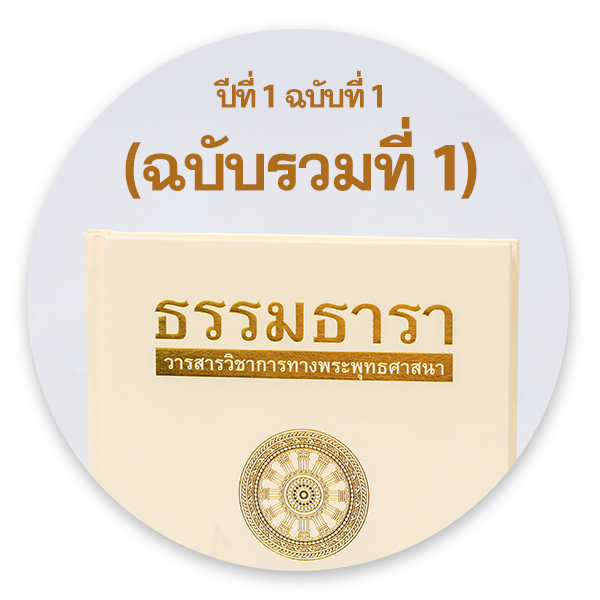What Is the Difference between Theravāda and Hīnayāna?
Main Article Content
Abstract
What is the difference between Theravāda and Hīnayāna? It is one of my questions that I often bring up to people around me in Buddhist Studies. Many answer me with confidence: “They are the same. No difference. Hīnayāna is just the term used by Mahāyāna to call Theravāda Buddhism in a condescending way.”
However, it is not quite a perfect answer as actually we could use “Theravāda” and “Hīnayāna” as interchangeable terms only if in the context of Buddhism of the modern world. Fixed on such a general idea that “Theravāda and Hīnayāna are the same,” we risk distorting our understanding of the history of Buddhism, and how we relate to the past. And this is a main reason that encourages me raise this issue in the present
paper.
What is the difference between Theravāda and Hīnayāna? A clearcut answer is that Theravāda is one of the sects belonging to Hīnayāna Buddhism. Or a shorter explanation in mathematical terms: “Theravāda is
a subset of Hīnayāna.
Article Details
ลิขสิทธิ์ สำนักการศึกษา วัดพระธรรมกาย
References
Kathāvatthu-aṭṭhakathā. 1979. edited by N.A.Jayawickrama. London: PTS
Dīpavaṃsa: An Ancient Buddhist Historical Record. 2000. edited by Hermann Oldenberg. Oxford: PTS. (first printed. 1879)
Taishō-shinshū-daizōkyō 大正新脩大蔵経 (พระไตรปิฎกจีน ฉบับไทโชชินชูไดโซเคียว). 1924-1934. Tokyo: Daizōshuppansha.
BAREAU, André. 2013. The Buddhist Schools of the Small Vehicle. translated by Sara BoinWebb. edited by Andrew Skilton. London: Buddhist Society
DEEG, Max. 2012 “Sthavira, Thera and ‘*Sthaviravāda’ in Chinese Buddhist Sources.” How Theravāda is Theravāda? Exploring Buddhist Identites: 129-162, edited by Peter Skilling, Jason A. Carbine, Claudio Cicuzza, and Santi Pakdeekham. Chiang Mai: Silkworm Books.
GETHIN, Rupert. 2012. “Was Buddhaghosa a Theravādin? Buddhist Identity in the Pali Commentaries and Chronicles.” How Theravāda is Theravāda? Exploring Buddhist Identites. edited by Peter Skilling, Jason A. Carbine, Claudio Cicuzza, and Santi Pakdeekham. Chiang Mai: Silkworm Books.
HIRAKAWA, Akira (平川彰). 2000. Ritsuzō-no-kenkyū vol.2 Hirakawa-Akira-chosakushū #10 律蔵の研究 II・平川彰著作集 #10 (งานวิจัยพระวินัยปิฎก เล่ม 2 – รวมผลงานเขียนของฮิรากาวะ ลำดับที่ 10). Tokyo: Shunjūsha.
HIRAKAWA, Akira (平川彰). 2007. A History of Indian Buddhism. translated by Paul Groner. 2nd Indian ed. Delhi: Motilal Banarsidass.
HIRAKAWA, Akira (平川彰). 2008. Indo-bukkyōshi インド仏教史 vol.1 (ประวัติศาสตร์พระพุทธศาสนาอินเดีย
เล่ม 1). 17th ed. Tokyo: Shunjūsha.
KIMURA, Ryukan. 1978. A Historicsal Study of the terms Hinayāna and Mahāyāna and the Origin
of Mahāyāna Buddhism. New Delhi: Gayatri Offset.
LAMOTTE, Ètienne. 1988 History of Indian Buddhism. translated by Sara Boin-Webb. France: Peeters Publishers
OLDENBERG, Hermann. 2000. Dīpavaṃsa – An Ancient Buddhist Historical Record. Oxford: PTS. (first
printed. 1879)
PERREIRA, Todd LeRoy. 2012. “Whence Theravāda? The Modern Genealogy of an Ancient Term.” How
Theravāda is Theravāda? Exploring Buddhist Identites. edited by Peter Skilling, Jason A. Carbine, Claudio Cicuzza, and Santi Pakdeekham. Chiang Mai: Silkworm Books.
NORMAN, K.R. 1997. “Buddhism and Canonicity.” A Philological Approach to Buddhism: 131-148. London: University of London (SOAS).
SHIZUTANI, Masao (静谷正雄). 1978. Shōjō-bukkyōshi-no-kenkyū 小乗仏教史の研究 (งานวิจัยประวัติศาสตร์
พระพุทธศาสนาหินยาน). Kyoto: Hyakka’en.
SASAKI, Shizuka (佐々木閑). 1997a “A Study on the Origin of Mahāyāna Buddhism.” The Eastern Buddhist 30(1): 79-113.
SASAKI, Shizuka (佐々木閑). 1998. “Buha-bunpazu-no-hyōki-hōhō 部派分派図の表記方法 (วิธีเขียนแผนภาพ
การแบ่งนิกาย).” Indogaku-bukkyōgaku-kenkyū 印度学仏教学研究 47(1): 385-377.
SASAKI, Shizuka (佐々木閑). 2000. Indo-bukkyō-hen’i-ron インド仏教変移論 (ทฤษฎีการปรับตัวของพระพุทธ
ศาสนาอินเดีย). Tokyo: Daizōshuppansha.
SASAKI, Shizuka (佐々木閑). 2009. “A Basic Approach for Research on the Origins of Mahāyāna Buddhism.” Acta Asiatica 96: 25-46.
THANAVUDDHO BHIKKHU. 2003. “Shoki-bukkyō-ni-okeru-seiten-seiritsu-to-shugyō-taikei 初期仏教における聖典成立と修行体系 (กำเนิดพระไตรปิฎกและแนวปฏิบัติสู่การตรัสรู้ธรรมในพระพุทธศาสนายุคดั้งเดิม).” PhD diss., University of Tokyo.
TSUKAMOTO, Keishō (塚本啓祥). 1980. Shoki-bukkyō-kyōdanshi-no-kenkyū 初期仏教教団史の研究 (งานวิจัยประวัติศาสตร์คณะสงฆ์ในพระพุทธศาสนายุคต้น). 2nd ed. Kyoto: Heirakujishōten.
von HINÜBER, Oskar. 2008. A Handbook of Pāli Literature. 3rd Indian ed. New Delhi: Munshiram
Manoharlal.
ฉัตรสุมาลย์ กบิลสิงห์ (ภิกษุณีธัมมนันทา), แปล. 2553. คัมภีร์ทีปวงศ์. นครปฐม: มูลนิธิพุทธสาวิกา. (แปลจากฉบับแปลภาษาอังกฤษ Hermann Oldenberg, trans. 2001. Dipavamsa: Ancient Buddhist Historical Record. 3rd ed. New Delhi: Asian Educational Services.)
พระธรรมปิฎก (ป.อ.ปยุตฺโต). 2541. พุทธธรรม. พิมพ์ครั้งที่ 7.
อภิชัย โพธิ์ประสิทธิ์ศาสต์. 2551. พระพุทธศาสนามหายาน. กรุงเทพฯ: จุฬาลงกรณ์มหาวิทยาลัย.

